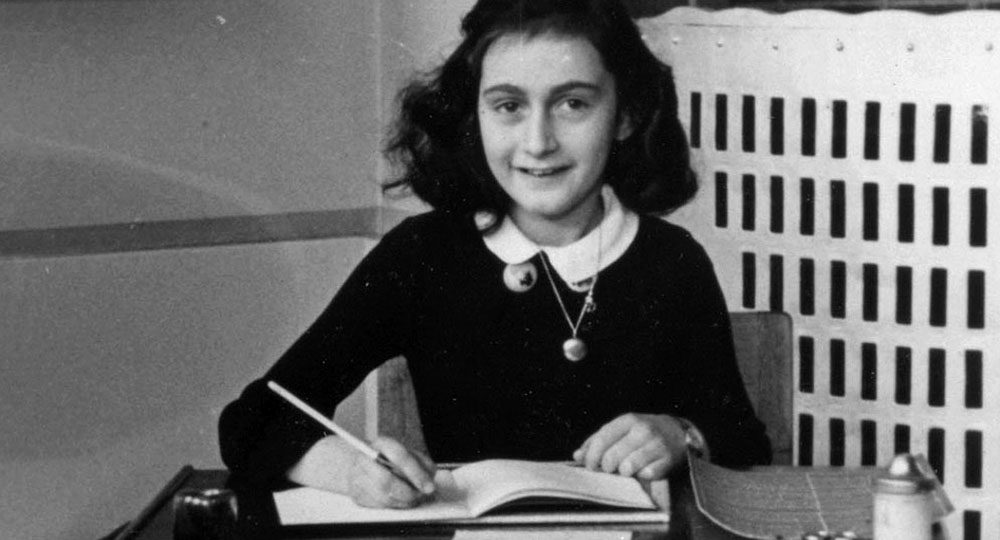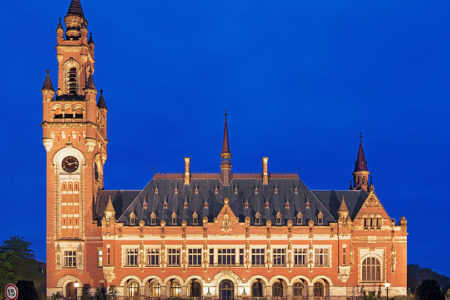The Real Anne Frank
Had she lived, Anne Frank would be seventy-five years old this year. But in March 1945, three months before her sixteenth birthday, Anne became one of eighteen thousand prisoners who died in a single month in the Nazis’ Bergen-Belsen concentration camp in Germany. Only a few weeks more and she would have been free.
The Nazis hated her for one reason alone: She was a Jew.
Yet her writing has endeared her to millions as the tender, courageous, expressive voice of a generation that endured the most depraved manifestations of man’s inhumanity to man and emerged to tell about it.
The Diary of a Young Girl, first published in 1947 under a different title, is Anne’s story in her own words. Written during her two difficult years in hiding (1942–1944) with her parents, sister, and another Jewish family, it reveals her emotions, fears, hopes, and dreams while shut off from the outside world in a cramped, secret annex above her father’s warehouse in Nazi-occupied Amsterdam, Holland. Following are a few excerpts:
Our many Jewish friends and acquaintances are being taken away in droves. The Gestapo is treating them very roughly and transporting them in cattle cars to Westerbork, the big camp in Drenthe to which they’re sending all the Jews. . . . We assume that most of them are being murdered. The English radio says they’re being gassed. —October 9, 1942
Have you ever heard the term “hostages”? That’s the latest punishment for saboteurs. It’s the most horrible thing you can imagine. Leading citizens—innocent people—are taken prisoner to await their execution. If the Gestapo can’t find the saboteur, they simply grab five hostages and line them up against the wall. You read the announcements of their death in the paper, where they’re referred to as “fatal accidents.” —October 9, 1942
I’ve reached the point where I hardly care whether I live or die. —February 3, 1944
It’s a wonder I haven’t abandoned all my ideals, they seem so absurd and impractical. Yet I cling to them because I still believe, in spite of everything, that people are truly good at heart. . . . It’s utterly impossible for me to build my life on a foundation of chaos, suffering and death. I see the world being slowly transformed into a wilderness, I hear the approaching thunder that, one day, will destroy us too, I feel the suffering of millions. And yet, when I look up at the sky, I somehow feel that everything will change for the better, that this cruelty too shall end, that peace and tranquility will return once more. —July 15, 1944.1
Anne’s final entry was August 1, 1944. Someone betrayed the family to the Nazis, who raided the annex three days later, arrested all eight occupants, and deported them to concentration camps.
Only Otto Frank, Anne’s father, survived. His secretary, Miep Gies, later searched the hiding place and found Anne’s diary, which she gave to Mr. Frank after the war.
Anne Frank’s The Diary of a Young Girl has sold more than 31 million copies in sixty-seven languages and is one of the best-selling books of all time.
Through it, Anne’s memory lives on—a symbol of courage, hope, and life to millions—and the voice of centuries of Jewish people who have yearned, with Anne, for the time “when we’ll be people again and not just Jews.”2
ENDNOTES
- “Diary Excerpts,” The Anne Frank Center USA, [www.annefrank.com/2_life_excerpts.htm].
- Introduction, Anne Frank House, [www.annefrank.nl/eng/af/af.html].







